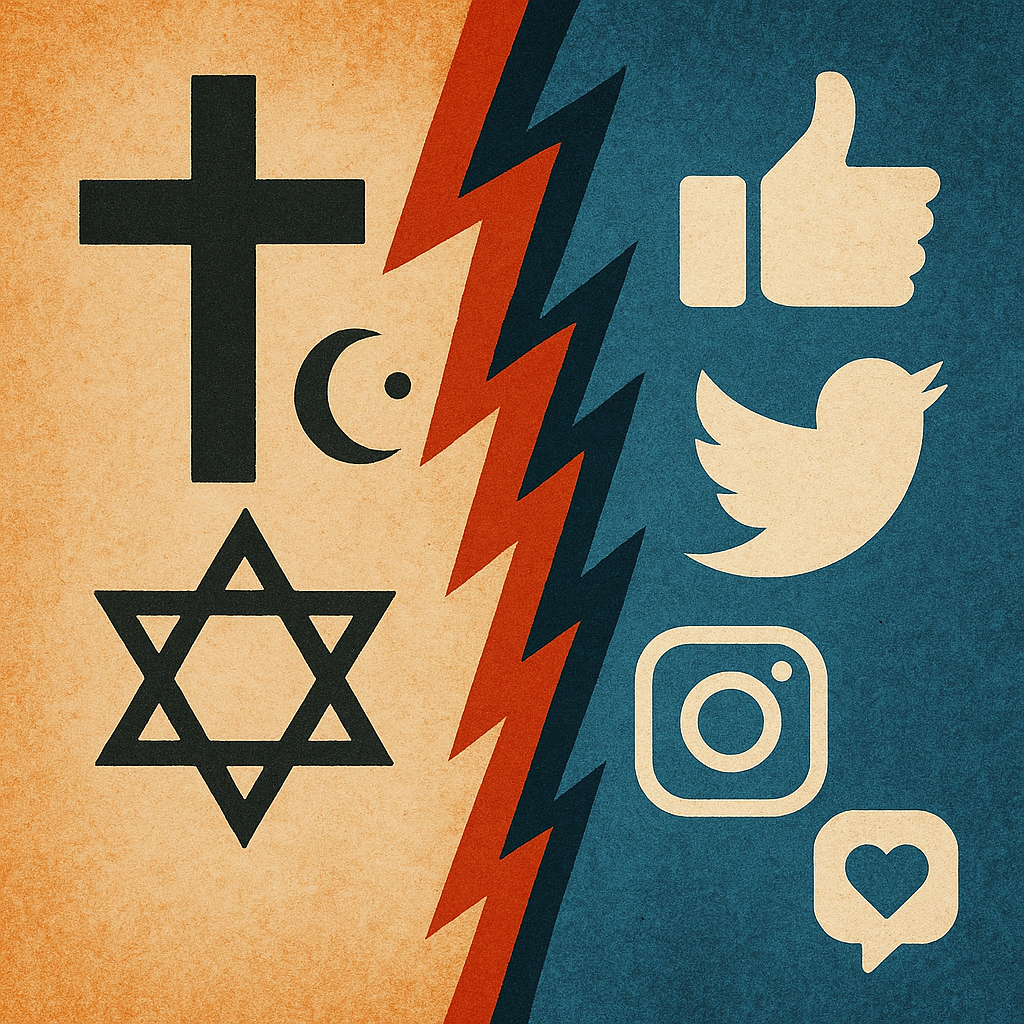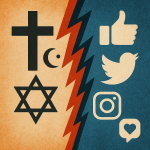Religion and Social Media Polarisation: Blessing or Curse?
In today’s hyperconnected world, social media has become a new kind of public square — one where ideas, beliefs, and identities collide every second. For religion, this digital arena has offered both opportunity and danger. On one hand, it allows spiritual leaders to reach global audiences, faith communities to share teachings instantly, and young people to rediscover religious traditions online. On the other, it has amplified divisions, encouraged extremism, and turned sacred conversations into viral conflicts. The question now facing modern societies is simple but urgent: Is social media a blessing or a curse for religion?
The New Digital Pulpit
For centuries, religious knowledge was transmitted through scriptures, sermons, and institutions. Social media has dramatically transformed that process. Priests, imams, monks, and gurus now livestream sermons, answer questions in real time, and engage millions through YouTube, Instagram, and X (formerly Twitter). Platforms that were once used for entertainment are now digital pulpits, spreading messages of compassion, mindfulness, and faith.
This digital revolution has also democratized religion. Ordinary believers can share their personal experiences, prayers, or interpretations of faith without institutional control. During the COVID-19 lockdowns, online rituals and virtual satsangs became lifelines for millions who could not visit temples, mosques, or churches. In that sense, social media has made religion more accessible, interactive, and community-driven than ever before.
Yet, this same openness has come with a cost. Without regulation or accountability, misinformation, hate speech, and manipulated content can spread faster than truth. When faith moves online, so do its conflicts — often magnified beyond proportion.
The Rise of Digital Sectarianism
Social media’s algorithms thrive on emotion — the stronger the reaction, the wider the reach. Unfortunately, outrage and fear often travel faster than peace and understanding. Religious content that promotes anger or superiority tends to go viral more quickly than content that promotes reflection or tolerance. As a result, online platforms sometimes reward divisive speech while burying moderate voices.
In India, where religion is deeply woven into cultural identity, this has created visible fractures. Online debates between faith communities often turn into digital battles, where nuance disappears and stereotypes thrive. Misleading videos, photos, or edited clips can ignite real-world tensions, leading to communal distrust or violence. The problem is not religion itself, but how digital ecosystems amplify its most aggressive expressions.
What was meant to be a platform for spiritual sharing has, in many cases, turned into an echo chamber of exclusion. Believers often find themselves trapped in algorithmic bubbles, seeing only content that reinforces their beliefs while demonizing others. This digital sectarianism challenges the very purpose of religion — which is to unite, not divide.
Faith, Fame, and the Influencer Culture
Social media has also given rise to a new class of spiritual influencers. From motivational speakers quoting scripture to preachers creating short-form reels, religion has entered the world of likes, shares, and sponsorships. Many of these voices use their platforms responsibly, spreading awareness, encouraging mindfulness, or bridging interfaith gaps. But others see faith as a means of personal branding or political leverage.
The pursuit of virality can sometimes compromise authenticity. Messages are shortened, simplified, or sensationalized to attract attention. The sacred becomes performative — a tool for engagement rather than enlightenment. This trend blurs the line between spirituality and self-promotion, between genuine guidance and digital celebrity.
The Positive Potential of Social Media
Despite its darker side, social media still holds immense potential for good. Faith-based organizations use it for humanitarian campaigns, disaster relief, and fundraising for social causes. Interfaith dialogues now happen online, connecting people from across continents. Platforms like YouTube and Clubhouse have hosted conversations between scholars of different religions, fostering mutual understanding and respect.
Young Indians, especially those distanced from traditional institutions, are rediscovering faith through podcasts, online lectures, and spiritual forums. For many, this digital exposure has sparked curiosity rather than conflict. Social media, when used mindfully, can reconnect religion to its ethical core — compassion, empathy, and service.
The Need for Digital Ethics
The challenge, therefore, is not to abandon social media, but to use it responsibly. Religious institutions, tech companies, and civil society must work together to promote digital literacy and ethical conduct online. Faith leaders can play a vital role by discouraging hate, verifying facts before sharing, and modeling respectful dialogue.
Platforms themselves must be more transparent about how religious content is promoted or censored. Algorithms that reward outrage need rethinking, especially in diverse societies like India, where religion influences politics, culture, and identity. Encouraging interfaith campaigns, fact-checking collaborations, and moderation training can help reduce digital toxicity.
A Question of Intention
Ultimately, whether social media is a blessing or a curse for religion depends on intention. If used to educate, connect, and inspire, it can become a powerful vehicle for harmony. But if used to divide, manipulate, or provoke, it turns sacred belief into a weapon of polarization.
Religion in the digital age must reclaim its moral compass — reminding users that online behavior is also a reflection of inner values. Posting responsibly, engaging respectfully, and resisting misinformation are not just civic acts; they are spiritual ones.
The Faith Feed of the Future
Social media has given religion new life — and new risks. It has made spirituality accessible, but also vulnerable to distortion. The task ahead is to cultivate a culture of digital devotion rooted in awareness rather than anger, inclusion rather than isolation.
If believers, influencers, and institutions can use the power of the internet to spread empathy instead of enmity, the digital age could mark not the decline of faith, but its renewal. In the end, social media is only a mirror — it reflects what humanity chooses to put into it. Whether it becomes a blessing or a curse will depend on how wisely we use it.
~Religion World Bureau









